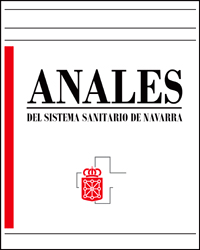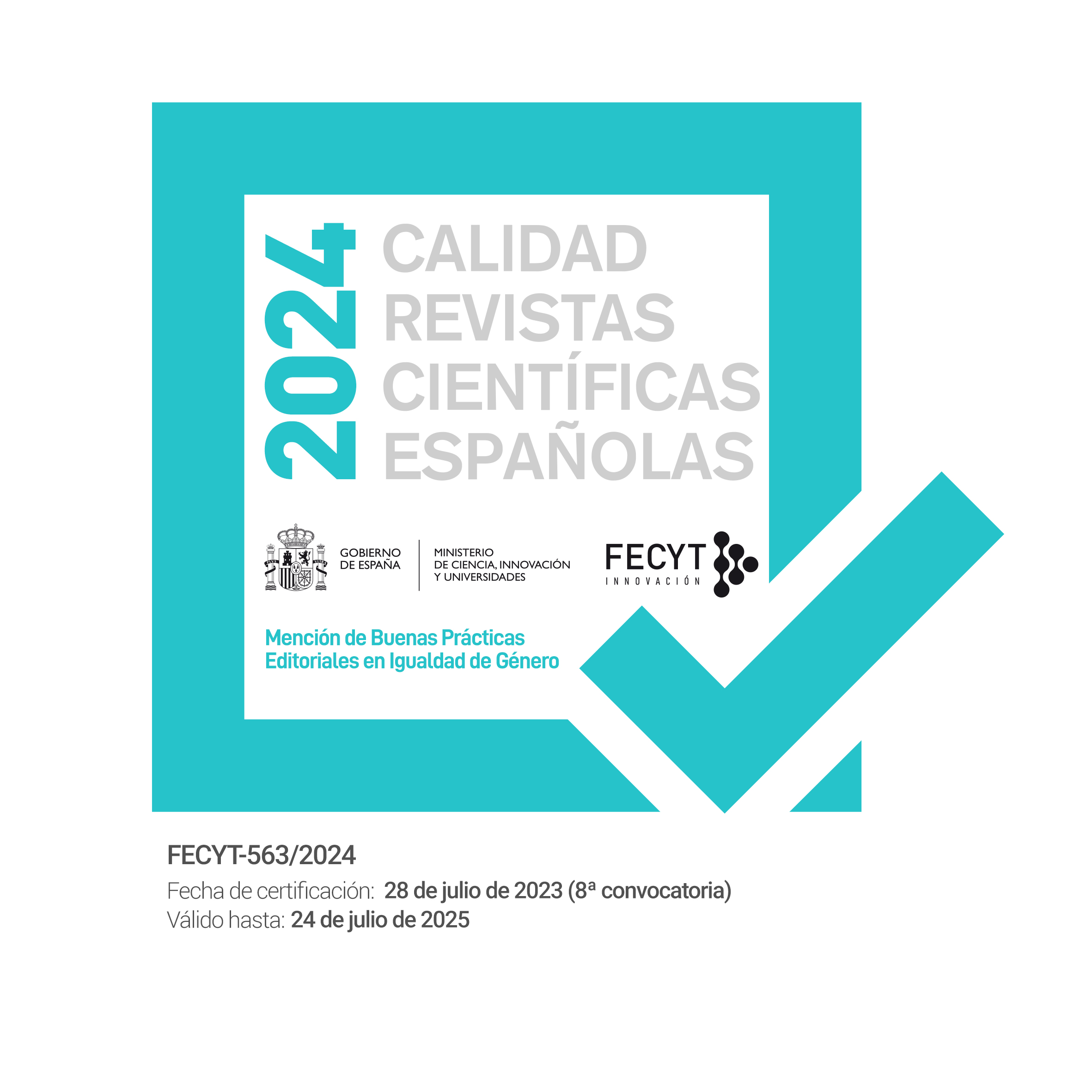Analysis of the evolution of patients attended in Spanish emergency departments during the first wave of the pandemic
DOI:
https://doi.org/10.23938/ASSN.0957Keywords:
COVID-19, Emergency department, Pandemic, Health managementAbstract
Background. To describe the number of visits (total and per COVID-19) attended by the Spanish hospital emergency departments (EDs) during March and April 2020 compared to the same period in 2019, and to calculate the quantitative changes in healthcare activity and investigate the possible influence of hospital size and regional COVID-19 seroprevalence.
Method. Cross-sectional study that analyzes the number of visits to Spanish public EDs, reported through a survey of ED chiefs during the study periods. Changes in healthcare activity were described in each autonomous community and compared according to hospital size and the regional impact of the pandemic.
Results. The 66% of the 283 Spanish EDs participated in the study. The total number of patients attended decreased to 49.2 % (< 30 % in the Castilla-La Mancha region), with a 60 % reduction in non-COVID-19 patients (reduction < 50 % only in the regions of Asturias and Extremadura). While there were no differences in changes of healthcare activity according to the size of the hospital, there were differences in relation to the regional impact of the pandemic, with a direct correlation related to the decrease in non-COVID-19 activity (the greater the impact, the greater the decrease; R2 = 0.05; p = 0.002) and an inverse correlation to the overall activity (the greater the impact, the lesser the decrease; R2 = 0.05; p = 0.002).
Conclusion. There was a very significant decrease in the number of ED visits during the first pandemic wave, although this decrease cannot be explained solely by the local incidence of the pandemic.
Downloads
References
POLLÁN M, PÉREZ-GÓMEZ B, PASTOR-BARRIUSO R, OTEO J, HERNÁN MA, PÉREZ-OLMEDA M et al. Prevalence of SARS-CoV-2 in Spain (ENE-COVID): a nationwide, population-based seroepidemiological study. Lancet 2020; 396: 535-544. https://doi.org/10.1016/S0140-6736(20)31483-5
JULIÁN-JIMÉNEZ A, GARCÍA DE, GONZÁLEZ DEL CASTILLO J, PENNA GUIMARAES H, GARCÍA-LAMBERECHTS EJ, MENÉNDEZ E et al. Puntos clave sobre la COVID-19 en los servicios de urgencias: propuestas de mejora para su atención en Latinoamérica. Emergencias 2021; 33: 42-58.
MIRÓ O, GONZÁLEZ DEL CASTILLO J. Colaboración entre servicios de urgencias españoles para fomentar la investigación: a propósito de la creación de la red SIESTA (Spanish Investigators on Emergengy Situations TeAm) y de la coordinación del macroproyecto UMC-19 (Unusual Manifestations of COVID-19). Emergencias 2020; 32: 269-277.
ALQUÉZAR-ARBÉ A, PIÑERA P, JACOB J, MARTÍN A, JIMÉNEZ S, LLORENS P et al. Impacto organizativo de la pandemia COVID-19 -19 de 2020 en los servicios de urgencias hospitalarios españoles: resultados del estudio ENCOVUR. Emergencias 2020; 32: 320-331.
CHEN WK, CHENG YC, CHUNG YT. Lin CC.The impact of the SARS outbreak on an urban emergency department in Taiwan. Med Care 2005; 43: 168-172. https://doi.org/10.1097/00005650-200502000-00010
CZEILER ME, MARYNAK K, CLARKE KEN, SALAH Z, SHAKYA I, THIERRY JM et al. Delay or avoidance of medical care because of COVID-19 –Related Concerns –United States, June 2020. MMWR Morb Mortal Wkly Rep 2020; 69: 1250-1257. https://doi.org/10.15585/mmwr.mm6936a4external icon
HARTNETT KP, KITE-POWELL A, DEVIES J, COLETTA MA,BOEHMER TK, ADJEMIAN J et al. Impact of the COVID-19 pandemic on emergency department visits—United States, January 1, 2019–May 30, 2020. MMWR Morb Mortal Wkly Rep 2020; 69: 699-704. https://doi.org/10.15585/mmwr.mm6923e1
SANTANA R, SOUSA JS, SOARES P, LOPES S, BOTO P, ROCHA JV: The demand for hospital emergency services: trends during the first month of COVID-19 response. Port J Public Health 2020; 38: 30-36. https://doi.org/10.1159/000507764
METZLER B, SIOSTRZONEK P, BINDER RK, BAUER A, REINSTADLER SJ. Decline of acute coronary syndrome admissions in Austria since the outbreak of COVID-19: the pandemic response causes cardiac collateral damage. Eur Heart J 2020; 41: 1852-1853. https://doi.org/10.1093/eurheartj/ehaa314
LAZZERINI M, BARBI E, APICELLA A, MARCHETTI F, CARDINALE F, TROBIA G. Delayed access or provision of care in Italy resulting from fear of COVID-19. Lancet Child Adolesc Health 2020; 4: e10-1. https://doi.org/10.1016/S2352-4642(20)30108-5
GIL-RODRIGO A, MIRÓ O, PIÑERA P, BURILLO-PUTZE G, JIMÉNEZ S, MARTÍN A et al. Evaluación de las características clínicas y evolución de pacientes con COVID-19 a partir de una serie de 1000 pacientes atendidos en servicios de urgencias españoles. Emergencias 2020; 32: 233-241.
MARTÍN-SÁNCHEZ FJ, GONZÁLEZ DEL CASTILLO J, VALLS CARBÓ A, LÓPEZ PICADO A, MARTÍNEZ-VALERO C, MIRANDA JD et al. Categorías diagnósticas y resultados a corto plazo en los pacientes con sospecha de COVID-19 atendidos en un servicio de urgencias. Emergencias 2020; 32: 242-252.
HERNÁNDEZ-BIETTE A, SANZ-SANTOS J, BOIX-PALOP L, NAVARRO ROLÓN A, MARTÍNEZ-PALAU M, DE LA SIERRA ISERTE A. Factores de riesgo de rehospitalización en pacientes con COVID-19 -19 leve tras el alta desde el servicio de urgencias. Emergencias 2020; 32: 413-415.
LÓPEZ-BARBEITO B, GARCÍA-MARTÍNEZ A, COLL-VINENT B, PLACER A, VARGAS CR, SÁNCHEZ C et al. Factores asociados a revisita en pacientes con diagnóstico de infección por SARS-CoV-2 dados de alta de un servicio de urgencias hospitalario. Emergencias 2020; 32: 386-394.
RUDILOSSO S, LAREDO C, VERA V, VARGAS M, RENÚ A, LLULL L et al. Acute stroke care is at risk in the era of COVID-19: experience at a comprehensive stroke center in barcelona. Stroke 2020; 51: 1991-1995. https://doi.org/10.1161/STROKEAHA.120.030329
JIMÉNEZ HERNÁNDEZ S, LOZANO POLO L, SUÑEN CUQUERELLA G, PEÑA PARDO B, ESPINOSA B, CARDOZO C et al. Características clínicas, factores de riesgo y resultados finales de pacientes con COVID-19 diagnosticados de tromboembolia de pulmón en urgencias. Emergencias 2020; 32: 253-257.
PUIGURIGUER FERRANDO J, SALGADO-GARCÍA E, NOGUÉ-XARAU S. Intoxicaciones atendidas en urgencias durante el confinamiento por la pandemia del COVID-19. Emergencias 2020; 32: 300-301.
MORALES X, TURRADO V, DE LACY B, HESSHEIMER A, FONDEVILA C, DE LACY AM. Experiencia de una unidad de urgencias de cirugía durante la pandemia provocada por el SARS-CoV-2. Emergencias 2020; 32: 435-437
Ministerio de Sanidad, Consumo y Bienestar Social. Catálogo Nacional de Hospitales 2019. http://www.msssi.gob.es/ciudadanos/prestaciones/centros-ServiciosSNS/hospitales/docs/CNH2019.pdf
FREUND Y, ROUSSEL M. COVID-19 en los servicios de urgencias franceses y españoles: no somos tan distintos entre nosotros. Emergencias. 2020; 32:447.
KANNAN VD, VEAZIE PJ. Predictors of avoiding medical care and reasons for avoidance behavior. Med Care 2014; 52: 336-345. https://doi.org/10.1093/eurheartj/ehaa314
TABER JM, LEYVA B, PERSOSKIE A. Why do people avoid medical care? A qualitative study using national data.J Gen Intern Med 2015; 30: 290-297. https://doi.org/10.1007/s11606-014-3089-1
WONG LE, HAWKINS JE, LANGNESS S, MURRELL KL, IRIS P, SAMMANN A. Where are all the patients? Addressing COVID-19 fear to encourage sick patients to seek emergency care. NEJM Catalyst 2020. https://catalyst.nejm.org/doi/pdf/10.1056/CAT.20.0193
DELÁS J, BARRERA N. COVID-19: la urgencia del cambio. Emergencias 2020; 32: 282-283.
JULIÁN-JIMÉNEZ A, GARCÍA DE. Acerca de cómo los servicios de urgencias españoles hicieron frente a la primera oleada de pacientes durante la pandemia COVID-19. Emergencias 2020; 32: 307-308.
MIRÓ Ò, ALQUÉZAR-ARBÉ A, LLORENS P, MARTÍN-SÁNCHEZ FJ, JIMÉNEZ S, MARTÍN A et al. Comparison of the demographic characteristics and comorbidities of patients with COVID-19 who died in Spanish hospitals based on whether they were or were not admitted to an intensive care unit. Medicina Intensiva 2021; 45: 14-26. https://doi.org/10.1016/j.medine.2020.09.004
GARCÍA-BASTEIRO A, ALVAREZ-DARDET C, ARENAS A, BENGOA R, BORRELL C, DEL VAL M et al. The need for an independent evaluation of the COVID-19 response in Spain. Lancet 2020; 396: 529-530. https://doi.org/10.1016/S0140-6736(20)31713-X
COVID-19 in Spain: a predictable storm? Lancet Public Health 2020; 5: e568. https://doi.org/10.1016/S2468-2667(20)30239-511:568
BATLLORI GASTÓN M. Simulación clínica y la pandemia por COVID-19. ¿De dónde venimos? ¿Hacia dónde queremos ir? An Sist Sanit Navar 2020; 43: 125-128. https://doi.org/10.23938/ASSN.0887
TARAZONA-SANTABALBINAA FJ,MARTÍNEZ-VELILLA N, VIDÁN M, GARCÍA-NAVARRO J. COVID-19, adulto mayor y edadismo: errores que nunca han de volver a ocurrir. Rev Esp Geriatr Gerontol 2020; 55: 191-192. https://doi.org/10.1016/j.regg.2020.04.001
GONZÁLEZ DEL CASTILLO J, CÁNORA LEBRATO J, ZAPATERO GAVIRIA A, BARBA MARTÍN R, PRADOS ROA F, MARCO MARTÍNEZ J. Epidemia por COVID-19 en Madrid: crónica de un reto. Emergencias 2020; 32: 191-193.
Downloads
Published
How to Cite
Issue
Section
License
Copyright (c) 2021 Anales del Sistema Sanitario de Navarra

This work is licensed under a Creative Commons Attribution-ShareAlike 4.0 International License.
La revista Anales del Sistema Sanitario de Navarra es publicada por el Departamento de Salud del Gobierno de Navarra (España), quien conserva los derechos patrimoniales (copyright ) sobre el artículo publicado y favorece y permite la difusión del mismo bajo licencia Creative Commons Reconocimiento-CompartirIgual 4.0 Internacional (CC BY-SA 4.0). Esta licencia permite copiar, usar, difundir, transmitir y exponer públicamente el artículo, siempre que siempre que se cite la autoría y la publicación inicial en Anales del Sistema Sanitario de Navarra, y se distinga la existencia de esta licencia de uso.








